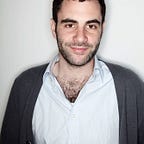Santa Claus, Airspace, & The Modern Aesthetic
One of my favorite marketing stories to tell is about how when I was working at an agency early in my career we were doing research for one of the big consumer electronics companies. Specifically, we were testing a new commercial another agency had put together. The commercial was “edgy” (it had snowboarders!) and got high marks by all the random consumers who got pulled into a room in the mall to watch it. That is, until they were asked the last question: “What brand was it for?” To which they all replied with the company’s biggest competitor. The moral is simple, after all that time and money, a commercial had effectively been made for another company. (One of the most well-known stories of this is the famous ad with a gorilla tossing around soft-sided luggage which was for … American Tourister.)
In Byron Sharp’s book How Brands Grow he talks a lot about ownable brand assets. These are the colors, iconography, and, increasingly, aesthetics that consumers associate with a single brand. The examples are endless: Tiffany’s has blue, Hermès orange, and UPS brown. Starbucks has the mermaid, Pepsi’s yin-yang, and McDonald’s golden arches. Coca-Cola has red, Spencerian script, polar bears, and Santa Claus (seriously, click through on that last one, it’s pretty amazing). There’s some evidence that the more unique assets a brand owns, the more valuable it is.
As impressive as all those brands are, though, I think the most valuable ownable asset in the world right now belongs to Apple, a brand I otherwise bar myself from writing about because they’re waaaaaay over-cited. As far as I can tell, Apple owns “the modern aesthetic”™. You know what I mean: Clean lines, natural woods, untreated metals, and, of course, an iPhone or Macbook sitting on its surface (this makes it all the more surprising to me that Apple has walked away from making monitors — all that real estate!). Walk into any office, watch any TV show, or turn on any ad and that’s what you’ll see. Part of what makes it so valuable is that everyone else who makes ads that use this aesthetic are effectively making Apple ads. Think about all those phone ads that attempt to display a large-screened smartphone in a minimalist aesthetic. If you were to quickly look you would assume it was an Apple ad, right? The world has become one big marketing campaign for the world’s largest company.
I bring all this up because I just recently read an article from last year that names this aesthetic “Airspace”:
It’s the realm of coffee shops, bars, startup offices, and co-live / work spaces that share the same hallmarks everywhere you go: a profusion of symbols of comfort and quality, at least to a certain connoisseurial mindset. Minimalist furniture. Craft beer and avocado toast. Reclaimed wood. Industrial lighting. Cortados. Fast internet. The homogeneity of these spaces means that traveling between them is frictionless, a value that Silicon Valley prizes and cultural influencers like Schwarzmann take advantage of. Changing places can be as painless as reloading a website. You might not even realize you’re not where you started.
The article isn’t about ads, but rather about how technology has led to the spread of a uniform “hip modern” aesthetic. It’s about how every city you turn up in, and every hotel or Airbnb you stay at feels like you haven’t left home.
And it’s all just pushing you further towards that iPhone you always wanted …
